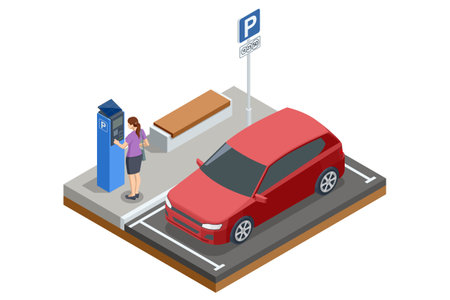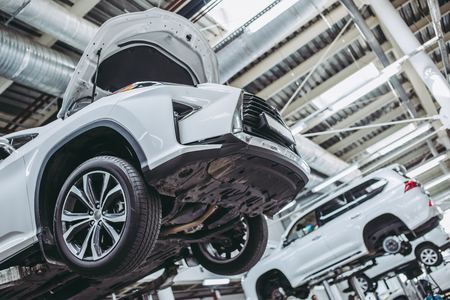Understanding the MOT for Electric and Hybrid Cars
As more British families embrace electric vehicles (EVs) and hybrids, it’s important to understand how the MOT—our annual Ministry of Transport test—applies to these modern cars. The MOT is a legal requirement for vehicles over three years old, ensuring they meet road safety and environmental standards. While the core purpose of the MOT remains unchanged, there are some key differences in how electric and hybrid vehicles are assessed compared to traditional petrol and diesel models.
For starters, EVs are exempt from emissions testing since they don’t produce exhaust gases. However, hybrids will still undergo emissions checks if they have a conventional engine as part of their system. Both types must pass thorough inspections of brakes, tyres, lights, steering, suspension, and other critical safety components. Special attention is often given to high-voltage systems and battery security in EVs and hybrids, reflecting their unique technology.
It’s also worth noting that because EVs have fewer moving parts than combustion-engine vehicles, there may be less wear on certain components. That said, family drivers should never assume an easier pass—proper maintenance remains essential. Understanding these subtle differences can help you prepare your electric or hybrid car confidently for its next MOT, keeping your vehicle safe and road-legal across the UK.
Common Checks for Electric and Hybrid Vehicles
When it comes to the MOT test, electric and hybrid cars are subject to many of the same inspections as their petrol or diesel counterparts. However, due to their unique systems, MOT testers focus on additional areas that are specific to these types of vehicles. Below is a breakdown of what you can expect during your MOT if you own an electric or hybrid car:
Battery Condition
The traction battery is at the heart of any electric or hybrid vehicle. During the MOT, testers will visually inspect the high-voltage battery for signs of leaks, damage, or corrosion. They’ll also check that the battery is securely mounted and that its casing remains intact. While performance tests aren’t carried out as part of the MOT, any obvious issues will be flagged up.
Charging Ports and Cables
Another area unique to electric and hybrid vehicles is the charging system. MOT testers will examine charging ports to ensure they are free from damage, debris, or corrosion. Covers should close securely and latches must operate correctly. The condition of any attached cables may also be checked for wear or exposed wiring.
High-Voltage Components
Because of the potential risks associated with high-voltage electrical systems, MOT testers pay special attention to cables and components marked with warning labels (usually orange). They look for secure mounting, intact insulation, and clear labelling. Any damage to these components could pose a safety risk and result in a failed MOT.
Summary Table: Key MOT Checks for Electric and Hybrid Cars
| Component | What Testers Look For |
|---|---|
| Traction Battery | Secure fitting, no visible leaks or damage |
| Charging Port | No corrosion or damage; secure covers |
| High-Voltage Wiring | No exposed wires; intact insulation; proper labelling |
| Cables & Connectors | No excessive wear or fraying; secure connections |
Ensuring these key areas are in good condition not only helps your electric or hybrid car pass its MOT but also keeps your vehicle safe and roadworthy for everyday use across Britain.

3. Routine Maintenance Before Your MOT
Keeping your electric or hybrid car in tip-top shape before the MOT doesn’t have to be a chore. With a few simple checks each week, you’ll not only boost your chances of a smooth MOT pass but also enjoy peace of mind every time you hit the road with your family. Start with the basics: tyre pressures. Electric and hybrid cars are often heavier due to their batteries, so making sure tyres are inflated to the manufacturer’s recommended levels is key for safety and efficiency. Don’t forget to check the tyre tread depth too; UK law requires at least 1.6mm across the central three-quarters of the tread.
Next up, pay attention to lights and indicators. It’s a good idea to ask a family member to help while you check that all headlights, brake lights, indicators, and number plate lights are working properly. If you spot any bulbs out, they’re usually quick and affordable to replace at home or at your local garage.
Warning lights on your dashboard should never be ignored. Before your MOT, make sure none are illuminated—especially those related to the battery, brakes, or emissions system. If you do see a warning light, refer to your owner’s manual or contact a trusted mechanic as soon as possible.
Finally, don’t overlook simple things like windscreen wipers and washer fluid. British weather is famously unpredictable, so effective wipers and plenty of screenwash are must-haves for clear visibility during those rainy school runs or weekend getaways. These little steps will help ensure your electric or hybrid car is ready for its MOT—and keep your journeys safe and stress-free.
4. Addressing the Brakes and Regenerative Systems
When preparing your electric or hybrid car for its MOT, paying special attention to the braking systems is vital. Unlike traditional petrol or diesel vehicles, EVs and hybrids feature both conventional hydraulic brakes and regenerative braking systems. Both need to be in good working order to pass the MOT test, as any issues could result in a failure.
Understanding Traditional and Regenerative Braking
The traditional braking system uses brake pads and discs to slow the car down, just like any other vehicle. The regenerative braking system, however, uses the electric motor to recover energy when slowing down, reducing wear on the conventional brakes. While this is great for efficiency, it can also mean that the standard brakes are used less frequently, sometimes leading to issues such as corrosion or seizing due to lack of use.
How to Inspect and Maintain Braking Systems
| Braking System | Inspection Tips | Maintenance Advice |
|---|---|---|
| Traditional Hydraulic Brakes | Check brake pads for thickness Inspect discs for scoring or rust Ensure fluid levels are correct |
If you hear squeaking or feel vibration, have them checked by a professional Regularly apply brakes firmly (when safe) to keep components moving freely |
| Regenerative Braking System | Monitor dashboard warning lights Test regen braking function during a drive Listen for unusual noises when slowing down |
Have the system checked during routine servicing Update software if recommended by manufacturer |
Common MOT Failures Related to Brakes
The most common reasons for MOT failures concerning brakes in EVs and hybrids include:
- Corroded brake discs: Especially if the car is driven mostly in town or at low speeds using regen braking.
- Inefficient handbrake: This is often overlooked but is tested during the MOT.
- Warning lights illuminated: Any brake warning light on the dashboard will result in an automatic fail.
Troubleshooting Brake Issues Before Your MOT
If your car has been standing for a while, take it for a short drive using the brakes gently but firmly to clear off any surface rust from the discs. Make sure there are no warning lights present on your dashboard before heading in for your test. If you notice reduced braking performance or strange noises, book a check-up with your trusted mechanic beforehand.
A Family-Friendly Tip
If you share your family EV or hybrid with multiple drivers, make sure everyone knows how both braking systems work. It’s not only safer but also helps maintain both systems in peak condition — especially important as more UK households switch to electrified cars.
5. Essential Documentation and Paperwork
Before heading off for your MOT, making sure you have all the right paperwork is just as important as ensuring your electric or hybrid car is in tip-top condition. Turning up unprepared could mean having to rebook, wasting both time and effort. Here’s a handy checklist to keep you on track:
V5C Logbook (Vehicle Registration Certificate)
This is the most crucial document for any MOT appointment in the UK. The V5C proves that you are the registered keeper of the vehicle, and it contains vital information such as your registration number and VIN. Double-check that your details are up-to-date to avoid any hiccups.
Previous MOT Certificates
While not always strictly necessary, bringing along your previous MOT certificates can be helpful. They provide a record of your vehicle’s testing history and can help the garage identify recurring issues or see how advisories were addressed.
Service History
A complete service history shows that your electric or hybrid car has been regularly maintained. This isn’t mandatory for an MOT, but it offers extra peace of mind and can sometimes make the process smoother—especially if repairs or upgrades have been made recently.
Proof of Insurance (If Required)
While proof of insurance isn’t needed for the MOT itself, some garages may ask for it if you’re leaving the car with them for an extended period. It’s always wise to bring along your insurance certificate just in case.
Owner’s Manual
The owner’s manual isn’t compulsory, but having it to hand can be useful—particularly with electric and hybrid models, which may have unique features or reset procedures that testers aren’t familiar with.
Other Useful Documents
If you’ve had significant work done on your vehicle—such as battery replacements, charging system updates, or recalls—bring documentation for these as well. It helps clarify any modifications and reassures testers about the car’s safety and compliance.
Keeping these documents organised and ready not only speeds up your MOT appointment but also demonstrates responsible vehicle ownership—a very British approach to motoring!
6. Finding an EV-Experienced MOT Test Centre
When it comes to booking your MOT, not every garage is equally equipped to handle electric and hybrid vehicles. Choosing a test centre with trained technicians who understand the specific needs of EVs and hybrids can make all the difference for a smooth and stress-free experience. These vehicles have unique systems—such as high-voltage batteries, regenerative braking, and specialised electronic components—that require knowledge beyond traditional petrol or diesel cars.
Look for garages that clearly advertise their expertise in EVs and hybrids. Many reputable centres will display certifications, such as IMI (Institute of the Motor Industry) qualifications in electric vehicle servicing. Don’t hesitate to ask about their experience with your particular make and model; a good garage will be happy to share details or provide references from other EV owners.
Why does this matter? First, safety: only properly trained staff should work on high-voltage systems to avoid accidents. Second, efficiency: experienced centres are familiar with common issues found during MOTs for electric and hybrid cars, so they’re less likely to miss important checks or cause unnecessary delays. Finally, you’ll get peace of mind knowing your car is in expert hands—especially important if your vehicle is still under manufacturer warranty or has specific service requirements.
In summary, taking the time to select the right MOT test centre helps ensure your electric or hybrid car remains roadworthy, safe, and ready for many more family adventures across Britain’s roads.


